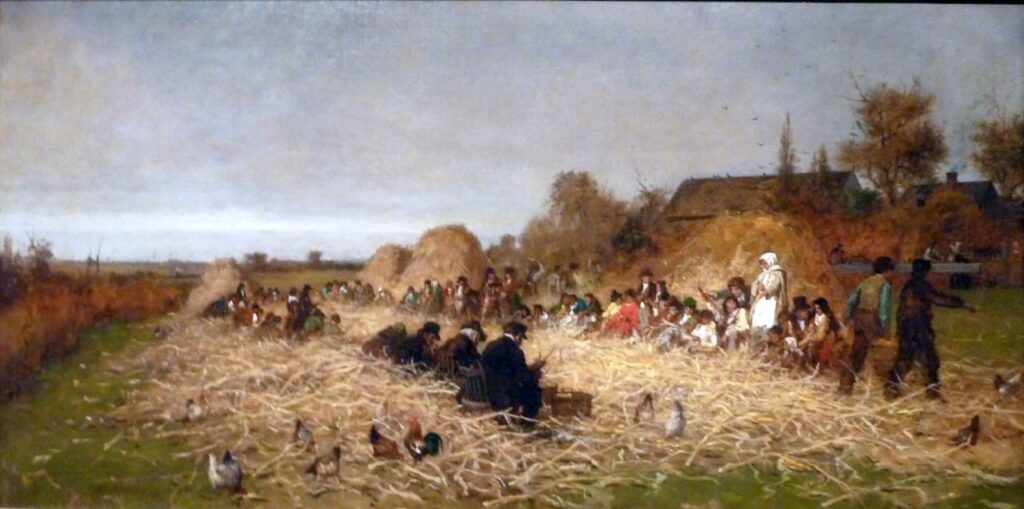When researching for history details in pre-photography days, I’m always on the look out for paintings. Take the Husking Bee, Island of Nantucket, by Eastman Johnson, which I came across when browsing around the Art Institute of Chicago.
The picture offers great details of community farming life in the 19th century, and also a bit of folk history. I had permission to snap this photo, without flash, and I also photographed the interpretive sign next to it, which has this cool detail. “[The artist] carefully included a woman discovering a red ear of corn, which, according to folk tradition, would allow her to kiss the person of her choice.”
I thought of this painting and its colorful glimpse of life in former days recently when reading Letters from America by James Flint. The book gives a first person account of the author’s walk from the East Coast to the U.S. interior in 1818, the things he observed along the way, the people, the climate, the farming methods, the terrain. On September 28, 1818 while passing through Ohio, James Flint writes: “The Indian Corn is nearly ripe, and is a great crop this year. The stalks are generally about eight feet high. The people have been picking the leaves off this sort of crop, and setting them up between the rows in conical bunches, to be preserved as winter food for the cattle.” (Flint, Letters from America, pp. 41-42.)
Instantly, I pictured our modern use of bundled cornstalks as Halloween decorations, and wondered if farmers also feed cornstalks to cattle. Apparently, it’s not standard practice. In our “modern” times, the winter diet of choice for cattle is generally hay. Only recently has the method of cornstalk grazing made a come back. About ten years ago, the website drovers.com published an article about it, Cornstalks for Cow Feed Is a No-Brainer. “University of Illinois researchers found that feeding co-products and cornstalk residue in the winter can save cow-calf producers up to $1 per day per cow compared to feeding hay. Grazing cornstalks is arguably the best cost-saving strategy Midwestern cattlemen can deploy.” And the practice not only saves money. When there’s a hay shortage like the one in 2012, it can also save the lives of horses who must have hay to survive.
These disconnects crop up (sorry) surprisingly often. It bemuses me, how researchers have gone to a lot of trouble to “discover” what cattle drovers knew centuries ago. And we think we’re so smart.

